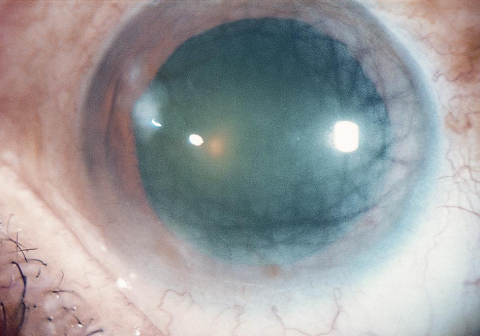
Understanding Crocodile Shagreen: Causes, Symptoms & Treatment
Crocodile shagreen is a rare eye condition that affects the cornea, the clear outer surface of the eye. It is characterized by raised, opaque, grayish-white or yellowish nodules that resemble the scaly skin of a crocodile—hence its name.
Although it is usually not life-threatening, crocodile shagreen can cause visual disturbances and requires careful monitoring by an eye specialist.
What Causes Crocodile Shagreen?
The exact cause of crocodile shagreen remains unclear, but research suggests a genetic link.
The condition is often present from birth or early childhood and may occur alongside certain connective tissue disorders, such as:
- Osteogenesis imperfecta
- Marfan syndrome
- Ehlers-Danlos syndrome
These systemic conditions can affect the structure and strength of collagen, an important protein in the cornea.
Common Symptoms
Crocodile shagreen primarily affects the clarity and smoothness of the cornea, leading to:
- Blurry or decreased vision
- Visual distortion or glare
- Eye irritation or redness
- Sensitivity to light (photophobia)
Symptoms can vary in intensity depending on the severity and location of the corneal nodules.
How Crocodile Shagreen Is Diagnosed
Diagnosis is made during a comprehensive eye examination.
Your ophthalmologist may use a slit-lamp microscope to closely examine the cornea’s surface.
Additional diagnostic tools can include:
- Corneal topography: to map the curvature of the cornea
- Optical Coherence Tomography (OCT): to evaluate corneal thickness and integrity
These tests help determine the extent of the condition and guide treatment planning.
Treatment Options
Currently, there is no cure for crocodile shagreen, but treatments focus on symptom management and vision improvement.
Common treatment options include:
- Lubricating Eye Drops
Artificial tears or lubricating drops can help reduce dryness and discomfort. - Corrective Lenses
Prescription glasses or contact lenses may correct refractive errors like nearsightedness or astigmatism caused by corneal irregularities. - Corneal Transplant (Keratoplasty)
In severe cases with significant visual impairment, a corneal transplant may be necessary to replace the damaged cornea with healthy donor tissue.
Prognosis
The outlook for crocodile shagreen varies.
In many cases, the condition remains stable and non-progressive throughout life.
However, some individuals may experience worsening nodules and progressive vision loss that requires surgical intervention.
Regular follow-up visits with an ophthalmologist are essential to monitor changes in corneal health and maintain optimal vision.
Summary
Crocodile shagreen is a rare, typically genetic corneal condition marked by cloudy, raised nodules on the cornea’s surface.
While there is no permanent cure, proper eye care and management can help maintain comfort and visual clarity.
If you or a loved one has been diagnosed with crocodile shagreen, consult an eye specialist for regular monitoring and individualized care.
Expert Eye Care in Karachi
With Pakistan’s internationally trained and most experienced cataract surgeons, corneal transplant surgeons, and ophthalmologists specializing in every subspecialty, The Eye Center – Dr. Mahnaz Naveed Shah & Associates in Karachi provides advanced diagnostic and treatment services for rare corneal conditions like crocodile shagreen.
For expert consultation or to book an appointment, contact 0304-111-9544.
Trust Dr. Mahnaz Naveed Shah and her team to help you protect and preserve your vision—with confidence.
